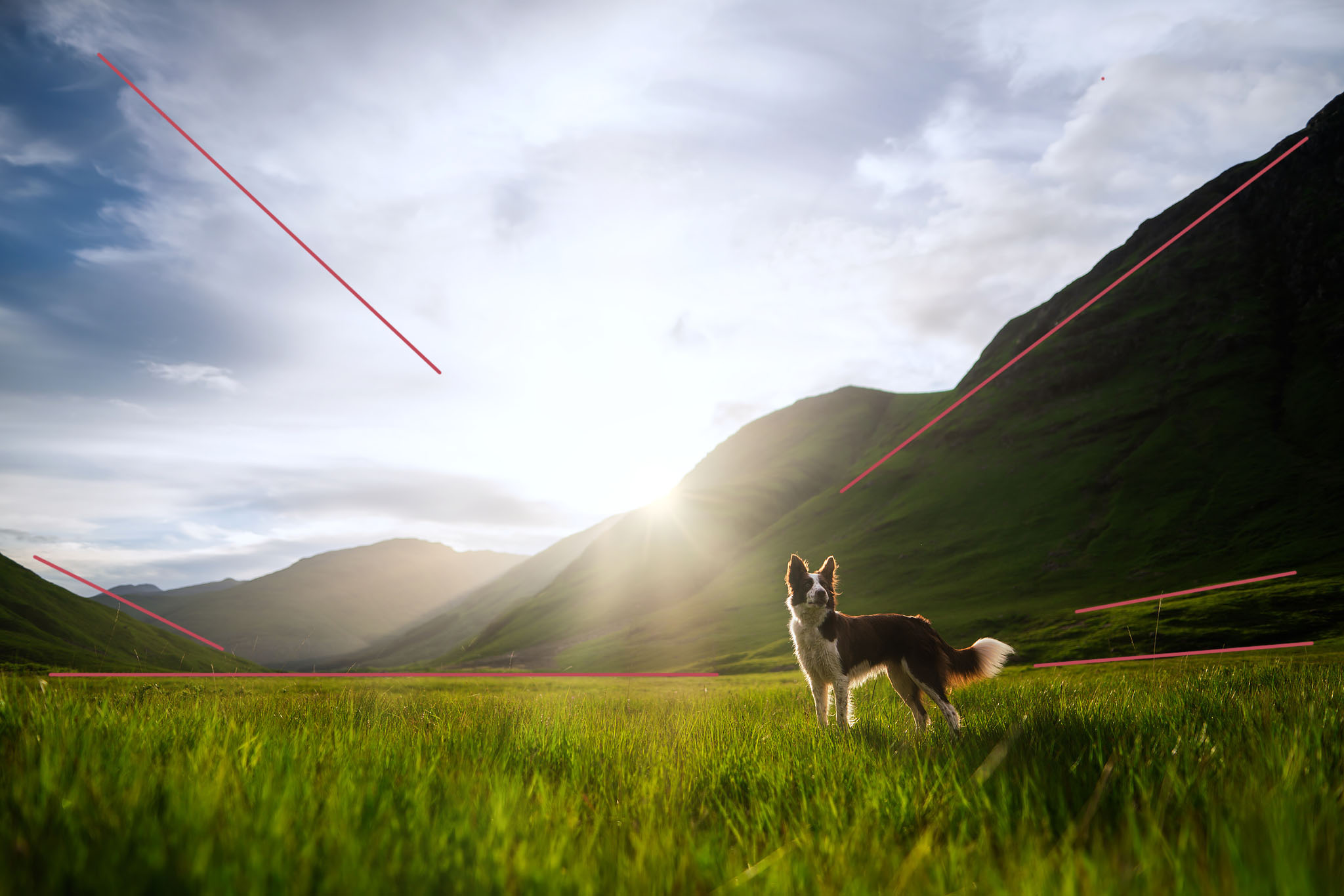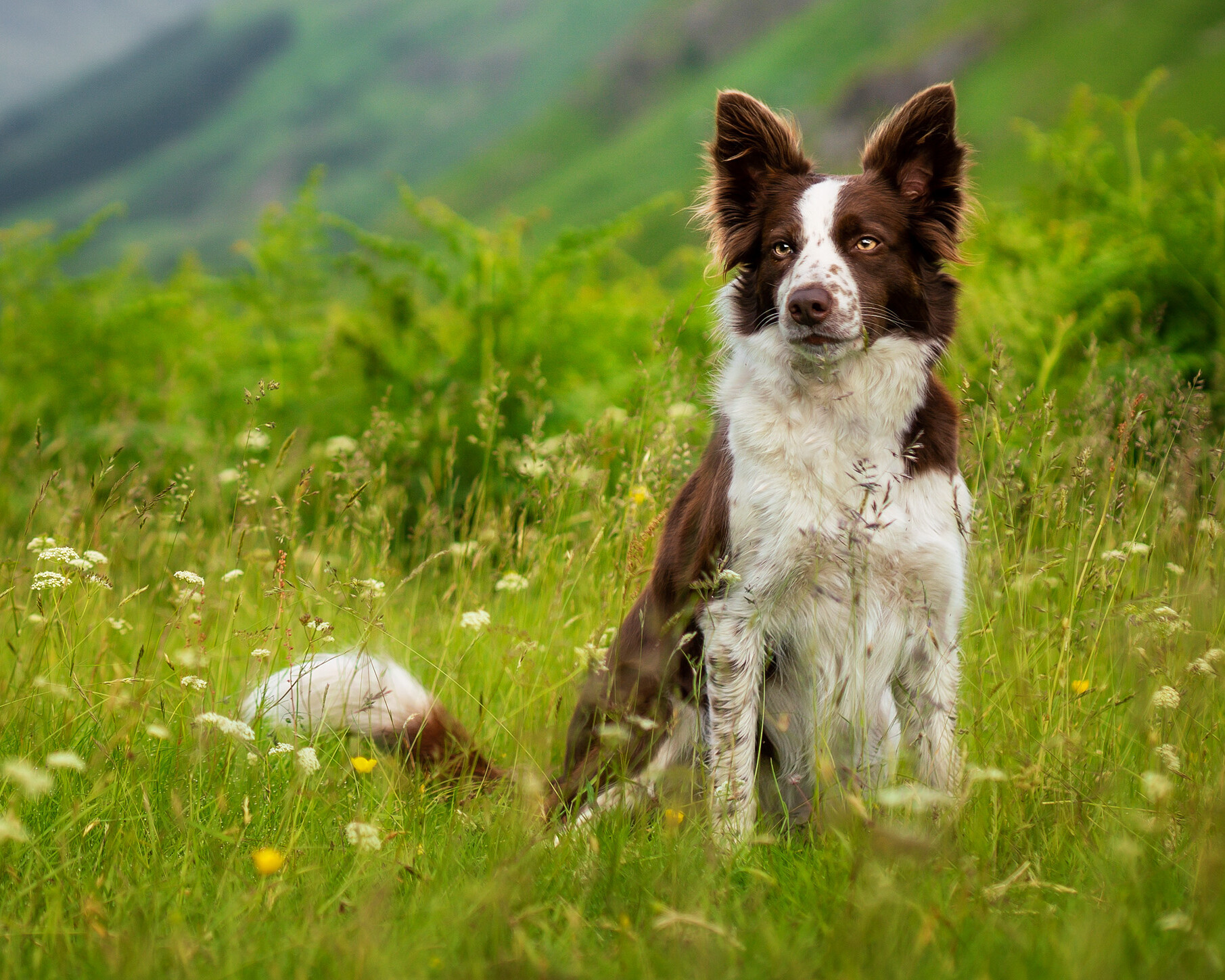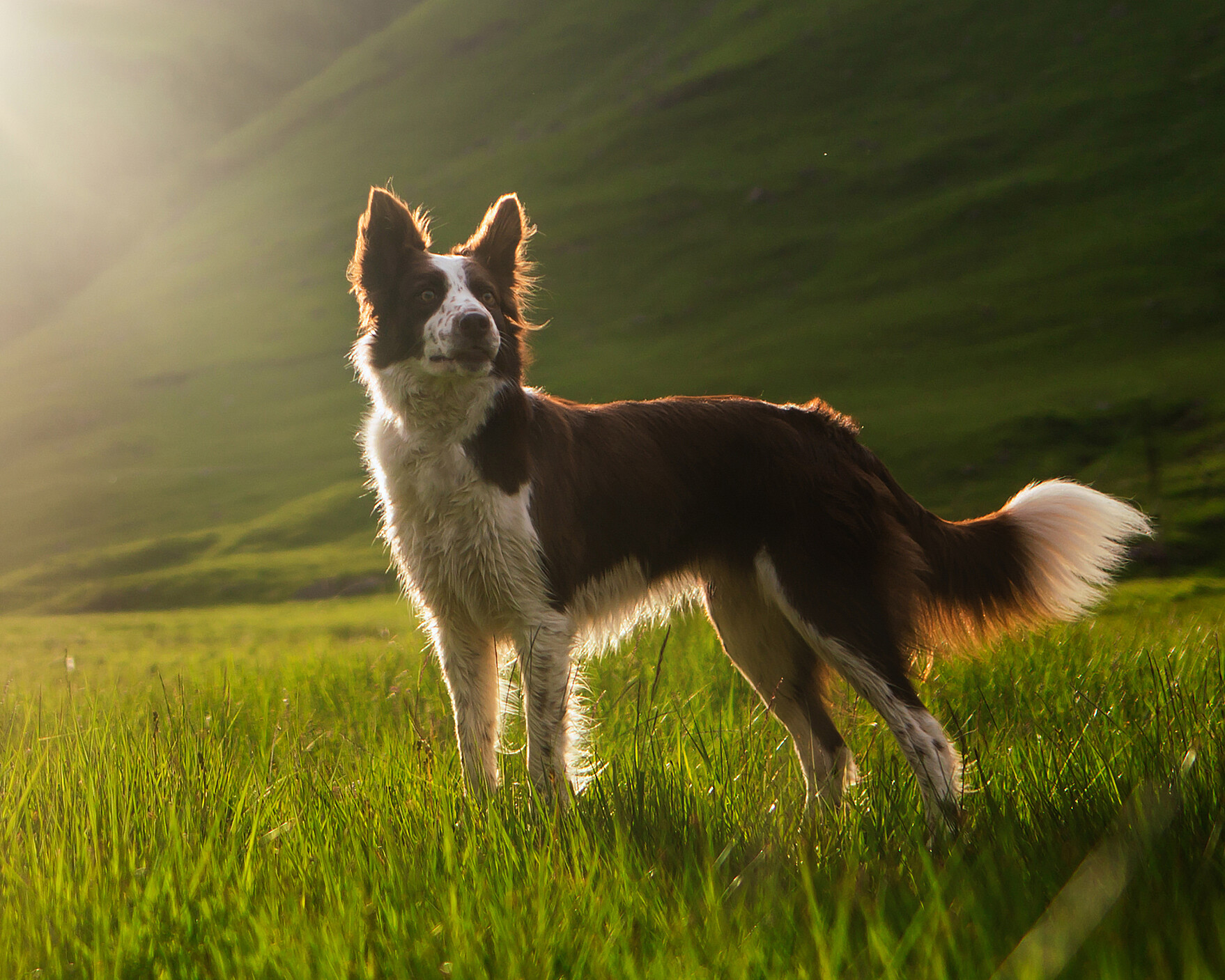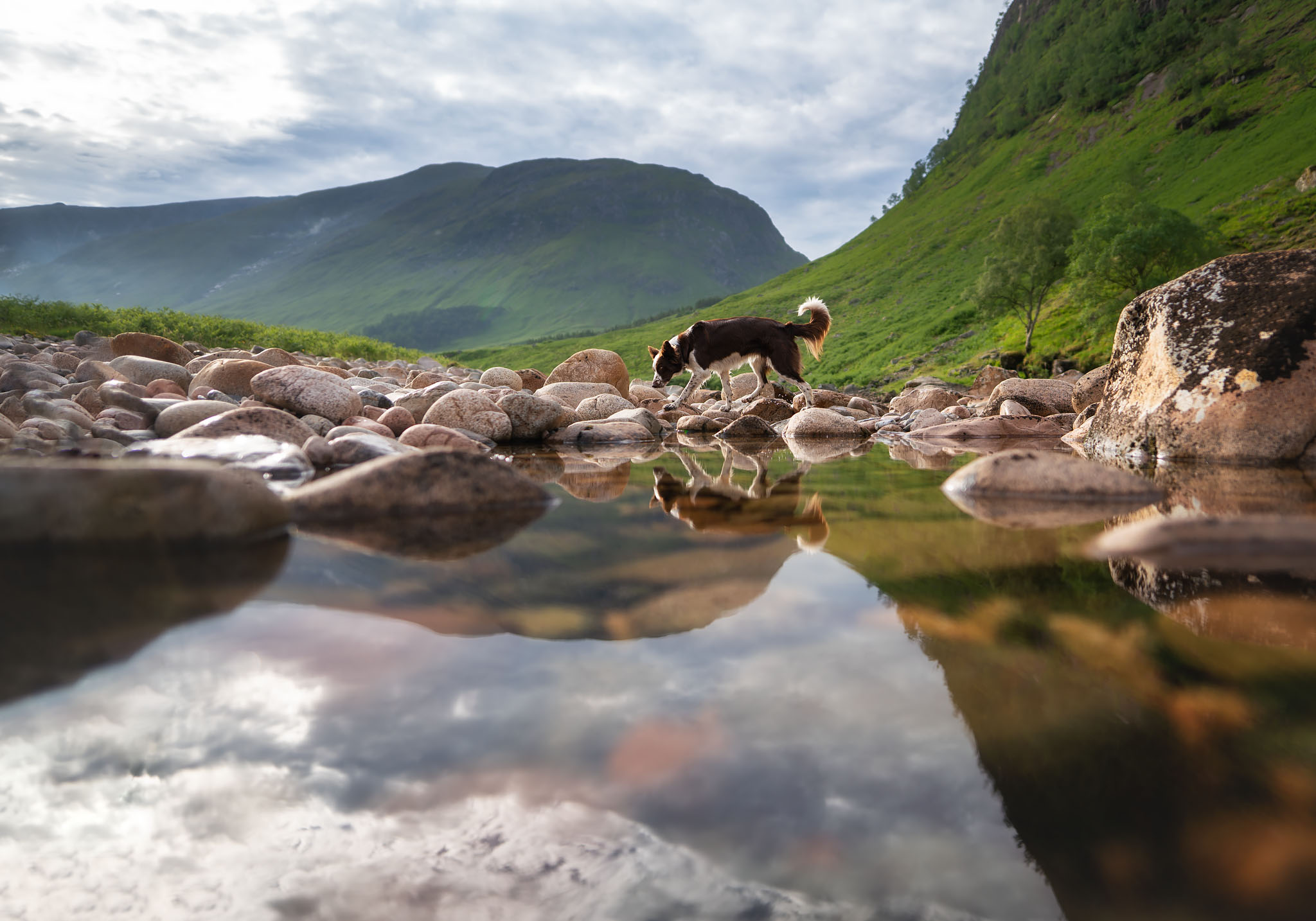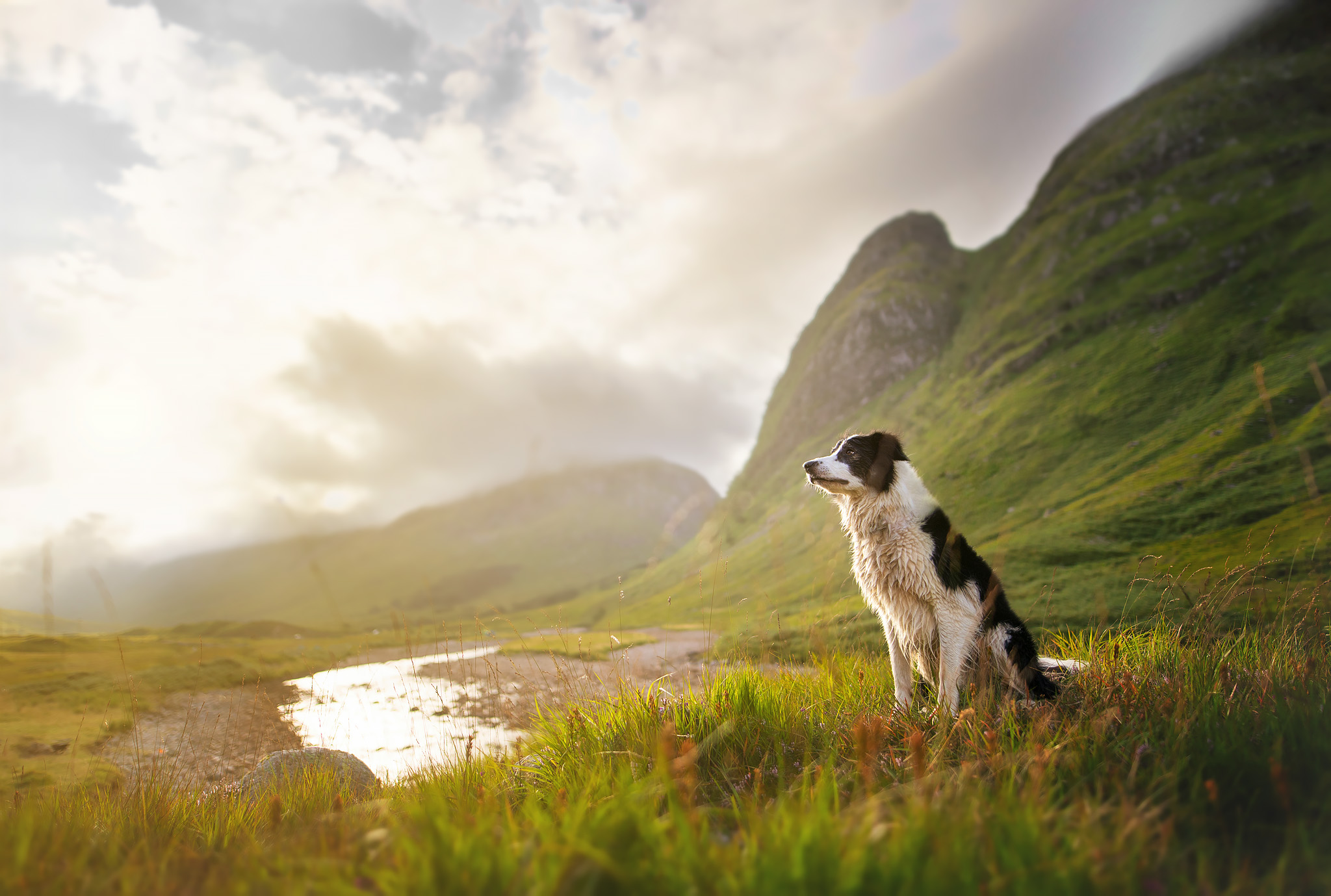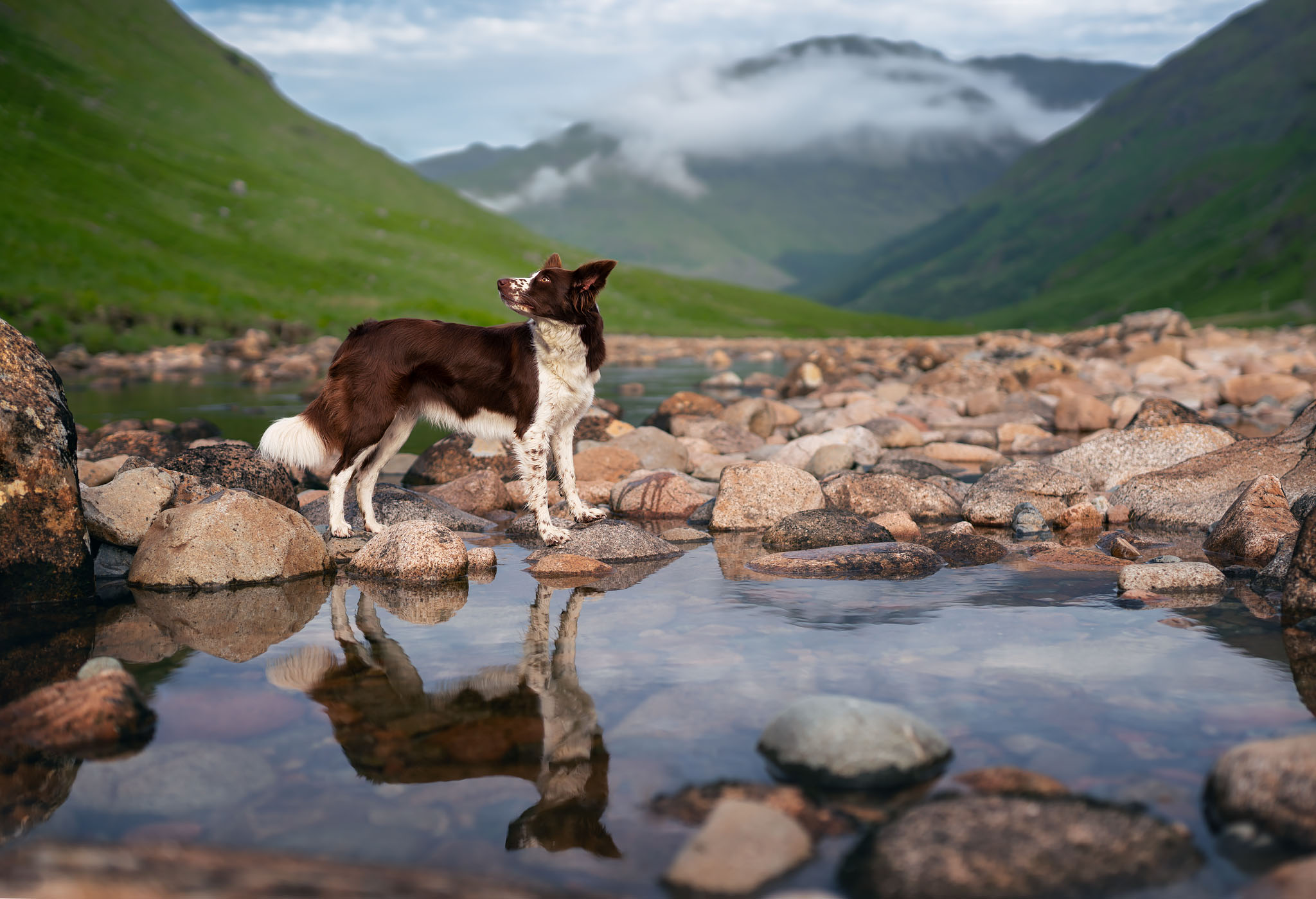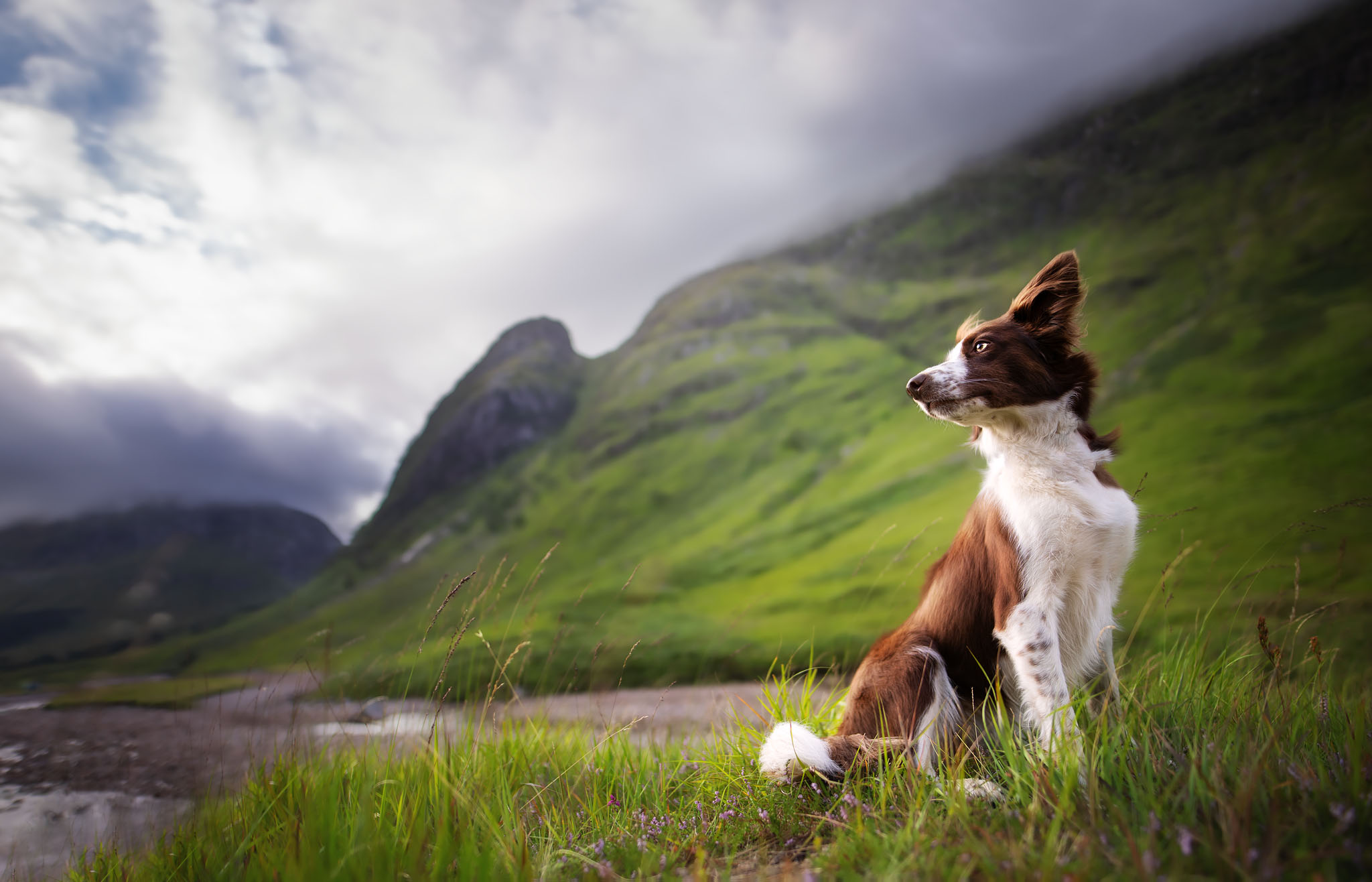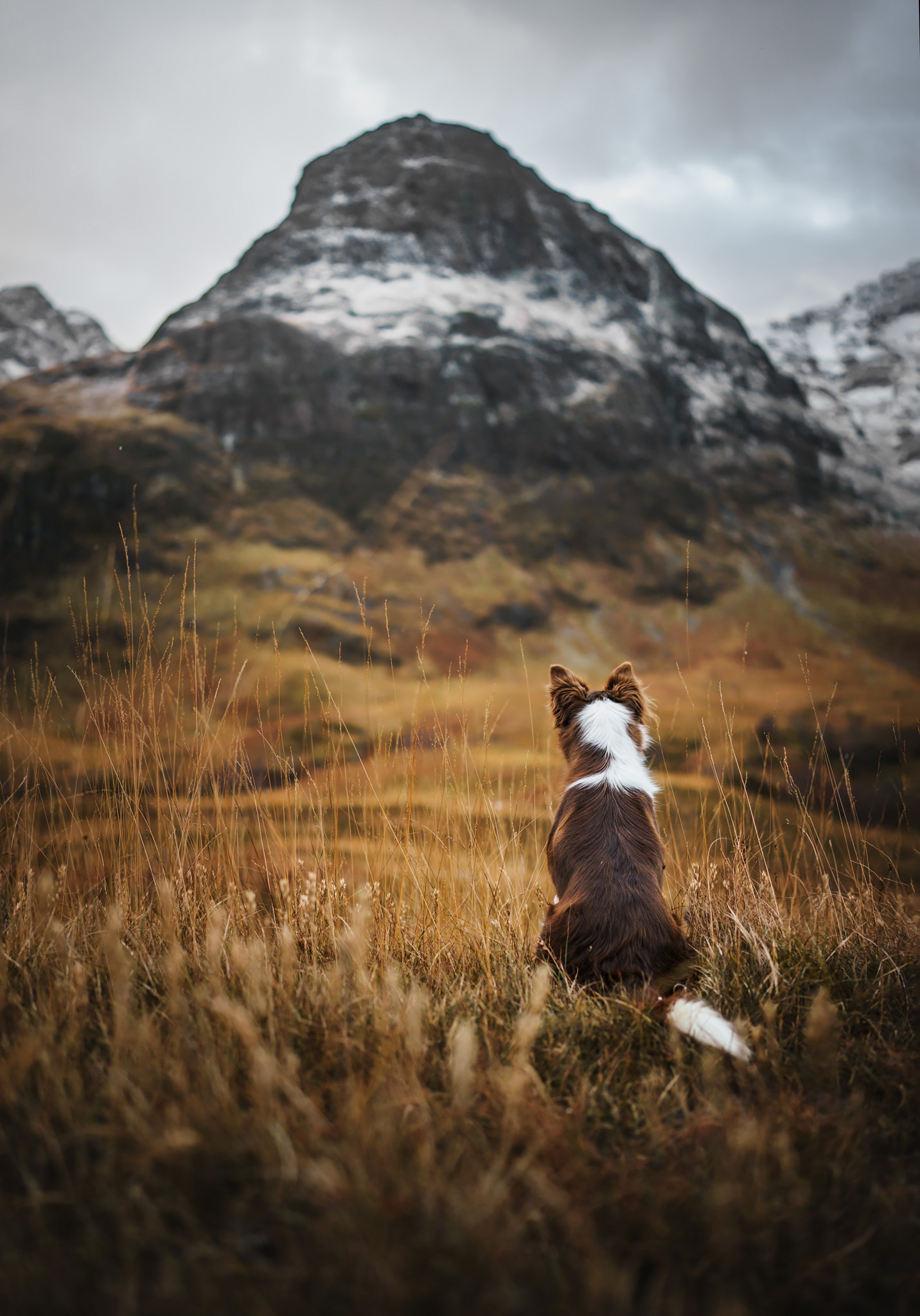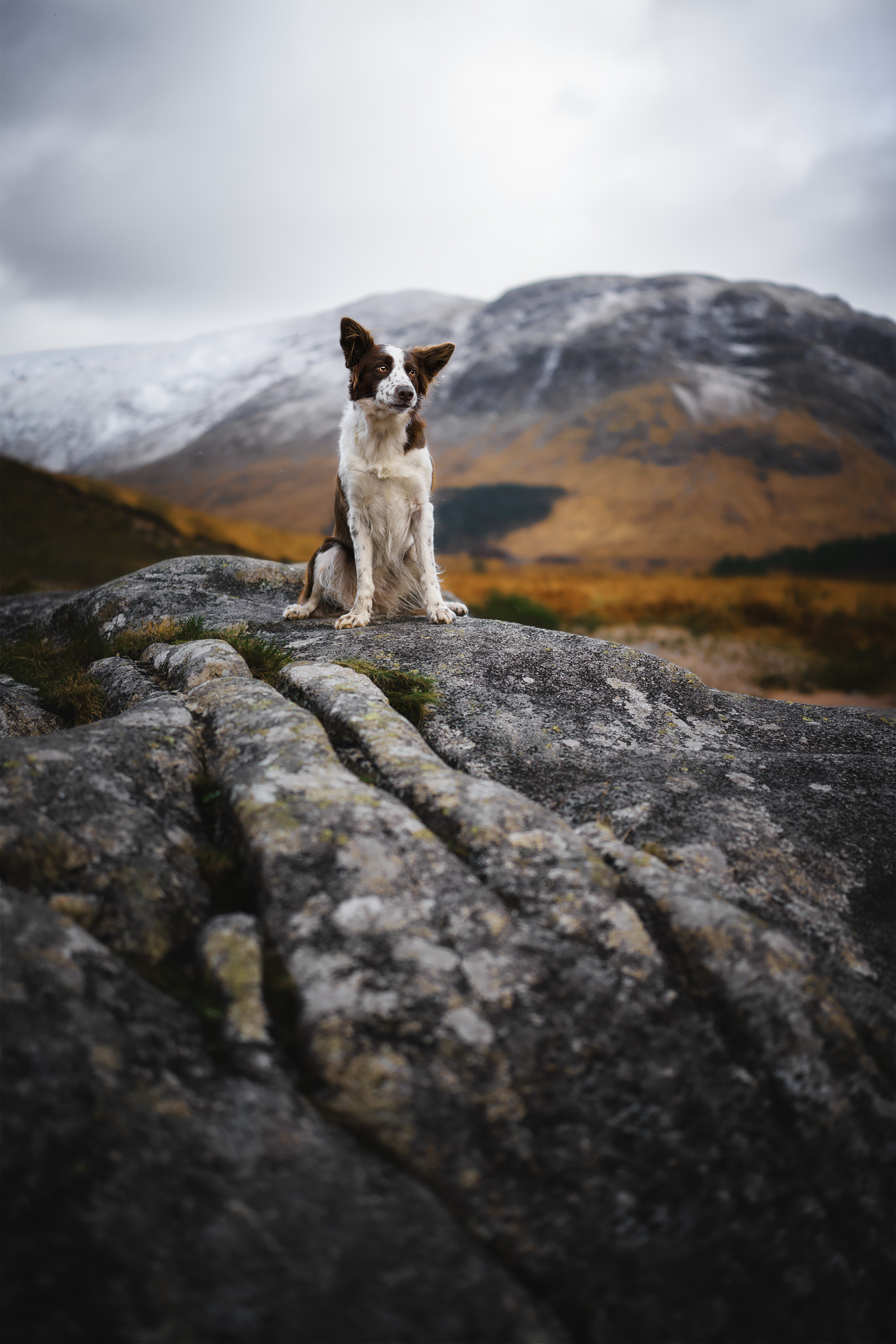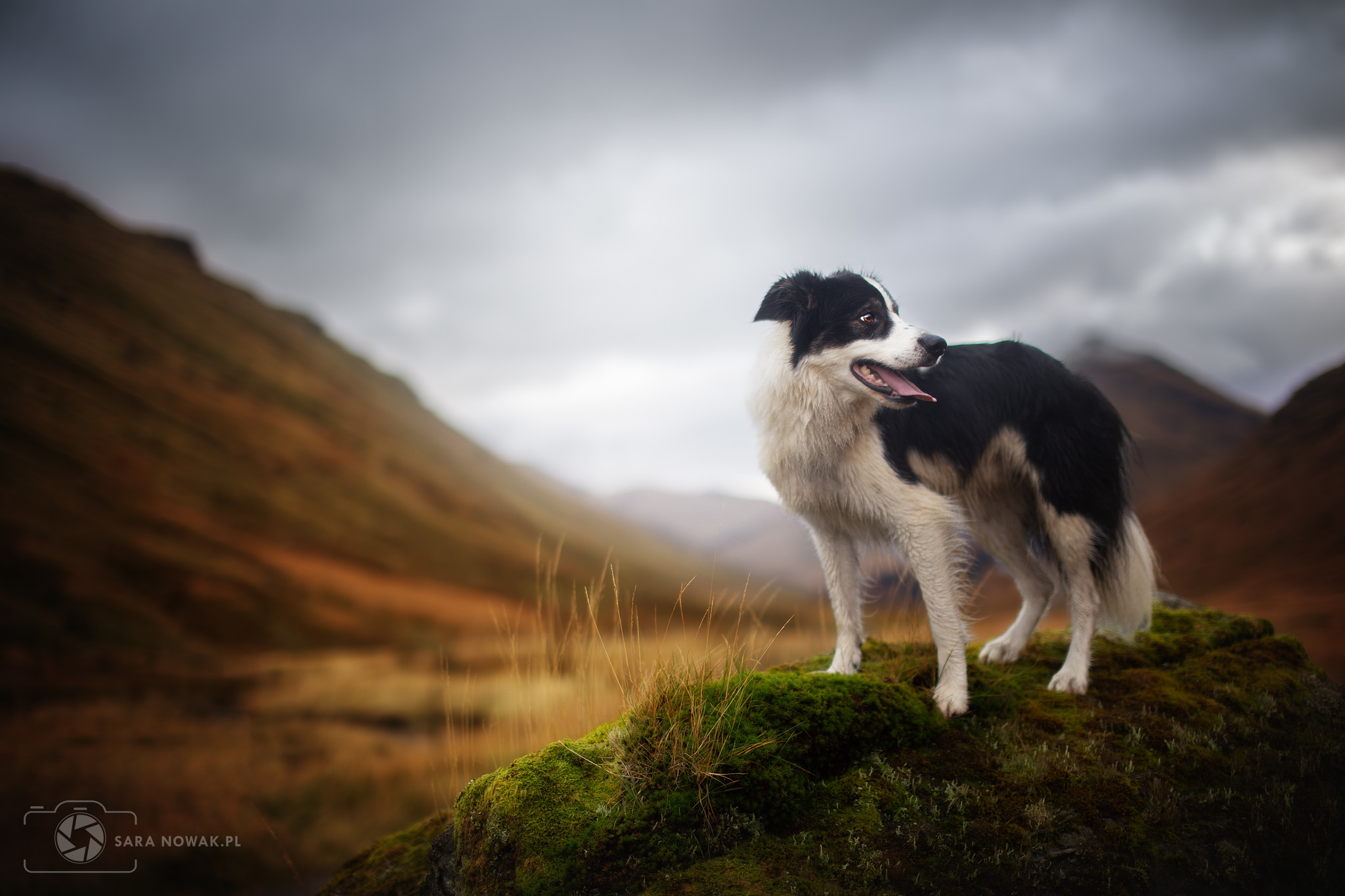Creating mood #1
I wanted to start a short series describing different tools and methods I use to build certain mood in my photographs. I always try to create images that convey emotions and tell a story. There are many factors that contribute to the final image and I’d like to do a breakdown of the tools we have, as photographers, that help us create a certain mood in our creations. Whenever I go for a photoshoot, I have an idea about what kind of pictures I want to create and every time I go back with completely different photographs, than I imagined! I love coming back to the same locations and trying different things! Come at a different time of day? Try a different lens? The possibilities are endless and that’s why I love outdoor photography so much!
Focal length
Let’s look these two photographs shot in Glen Etive in Scotland. They were both shot at the very same location, yet the atmosphere and the mood is completely different. Even though the subject is roughly the same size on both images, the usage 20mm and 50mm creates vastly different results in the background.
The first picture was shot with a 50mm f/1.4 lens at f/1.4. The background is more compressed, creating a more “closed”, cosy scene. The combination of this focal length, the distance to the subject and background creates a rather shallow depth of field. resulting in soft, blurred background. It really helps creating that lazy summer day mood.
The second picture was shot with 20mm f/1.4 lens at f/1.4 as well. The background is less compressed and almost feels stretched on the edges. The scene feels open and airy, you can almost feel the gentle wind blowing. Notice the leading lines created by more defined edges of the mountains, the horizon and the less obvious ones created by clouds that were “stretched” due to using wide angle lens. These lines create a more dynamic image and help focus on the dog, leading towards it. I love using wide angle lenses to creating dramatic scenes.
The light
I shoot with natural light only, so often I have to work with less than ideal light. I always liked the challenged that working with natural light brings, though. Sometimes the results can be very unexpected and in a good way! Look at the first photo again. I woke up quite early that day and the sky was overcast, creating very soft light, there are no harsh shadows. I think this kind of light work perfectly for creating very cosy looking portraits. The softness of the light works really well with blurred background and foreground and decreases the contrast, which suits the mood of the picture.
The second photo was shot in the evening, just before sunset, when the sun was almost gone behind the mountain peaks. There was a bit of clear sky which let the harsher, more direct rays of sun into the scene. I think this light was perfect for a wide angle shot. I also decided to shoot against the sun, to create a rim of light on Luna for more dramatic effect. Here’s a similar shot taken just a couple of minutes before, but the sun was behind my back. I think you will agree that it does not have quite the same impact as the backlit one!
The pose
The dog’s pose and expression can impact the mood of the photo dramatically, but this isn’t something we can always control. Let’s look at the first photo. I asked Luna to sit down among the wildflowers. She looks very calm with eyes almost half closed. It was early in the morning and she was very sleepy, so that helped a lot! The ears are relaxed and she almost looks like she’s “smiling” and just enjoying being there. I think her pose and expression work very well with previously mentioned soft light and shallow depth of field, creating a photo that has those summer vibes.
Sometimes, I like to let my dogs walk around and just do their thing. It does require a fair bit of walking, especially when shooting with prime lenses! However, it often helps me create more candid photos and that was also the case with the second photo. Look at Luna’s posture. She looks very alert, standing tall with her tail raised slightly. Her eyes are wide open, looking at something in the distance. The ears are moved forward, she looks like she just heard something. The subtle changes in the dog’s posture can make all the difference, especially to “dog people”, who understand the dog’s body language. I think overall her alert posture suits the dramatic mood of the photo very well.
Colours and editing
Editing plays a huge role in photography for some people and I am one of them. I tend to enhance what’s already in the photo, rather than changing everything completely to “force” it to look the way I want. Sometimes, adding a bit of saturation, vignette and contrast is enough. Look at the examples below. The edited photos look very different than RAW files, but the changes are quite simple.
I used vignette and brightened the area behind Luna, to help the viewer focus on her. I also enhanced greens on both pictures, but there’s a lot more contrast added on the second one, to help emphasise that dramatic light. I also used Orton effect, which I discussed in my previous post, to add that dreamy, soft look to the first picture.
Changing the colours does not always mean editing. Sometimes, if showing up at different time of day (golden hour vs blue hour, for example) or where the weather is different will make our location look completely different. More obviously, so will showing up at different times of year, when the leaves or grass changes colour.
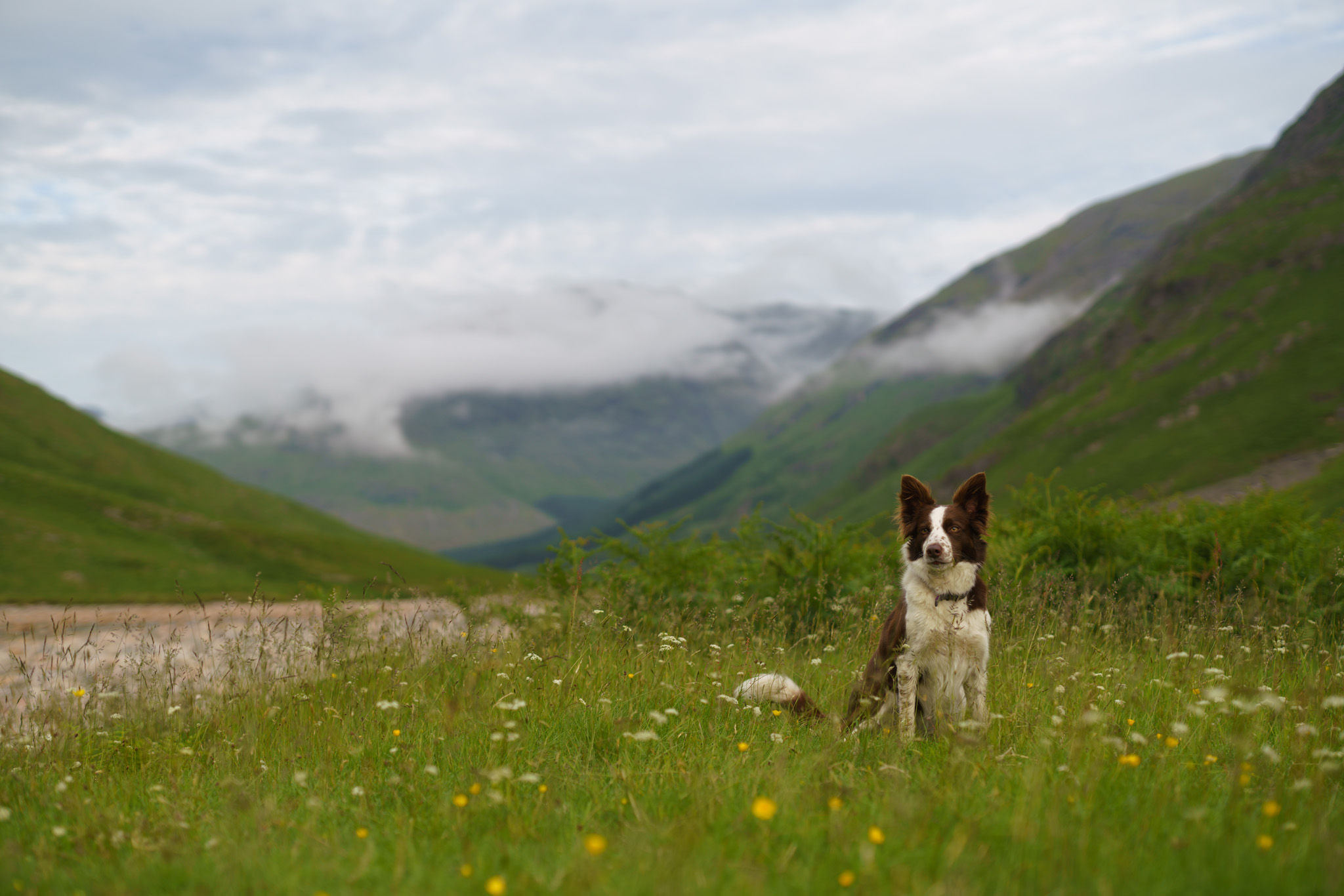

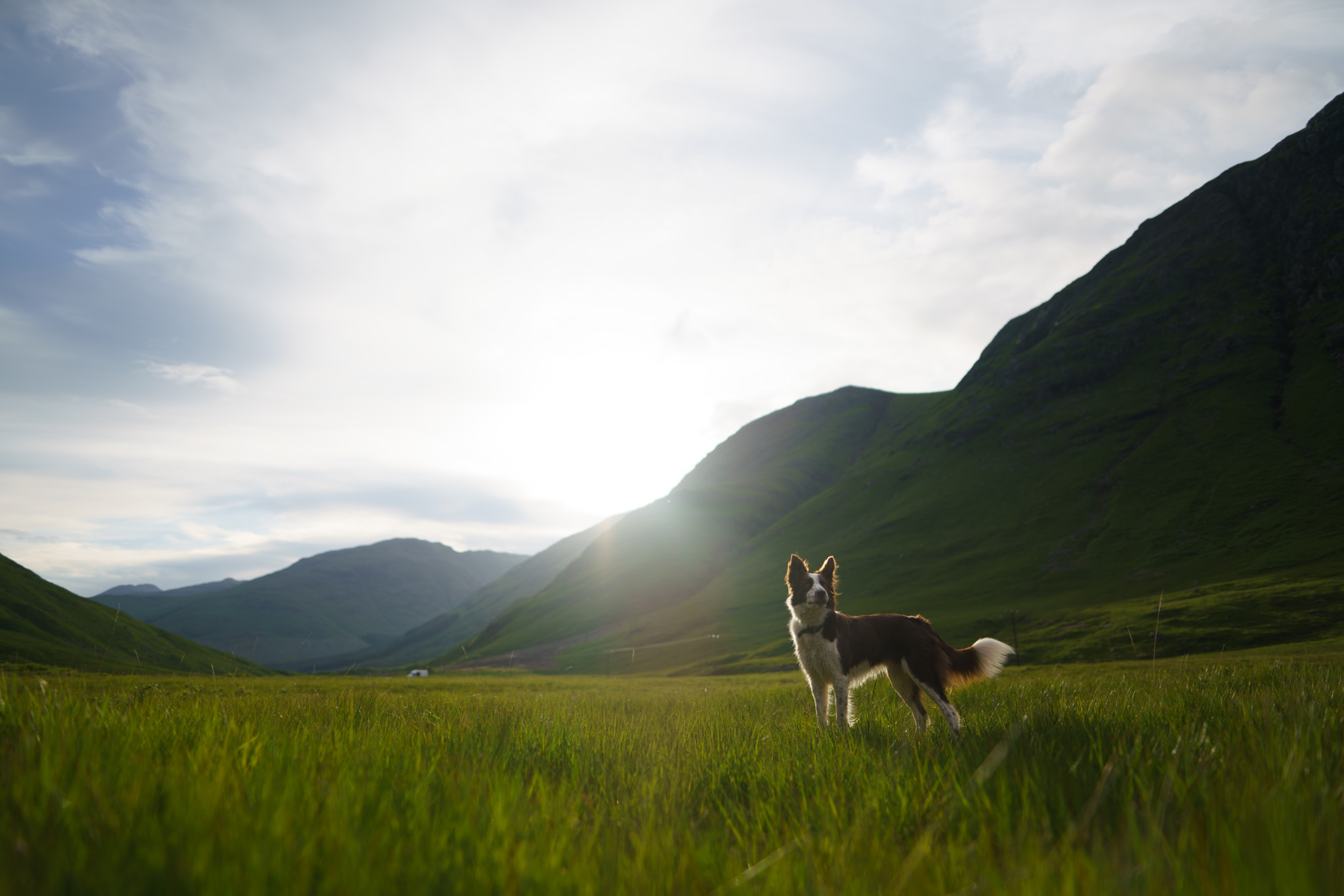
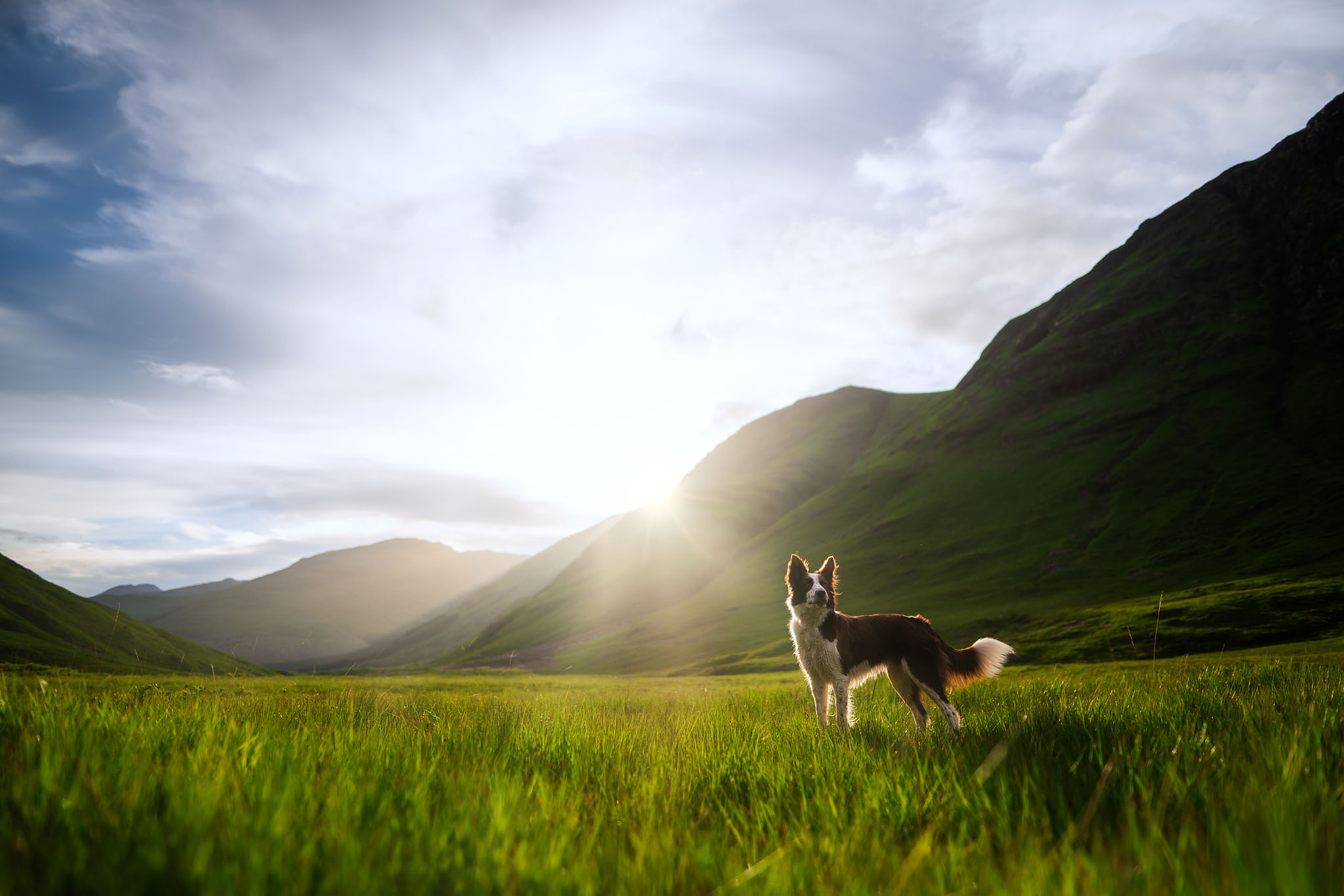
Final thoughts
I hope this breakdown was informative and will encourage you to experiment with gear, light and editing. Here’a small selection of photos taken in the Scottish highlands at different time of day, year and using a combination of wide angle (20mm and 35mm) as well as standard portrait lenses (50mm). My best advice is just go out there and try new things, break the rules and experiment!

